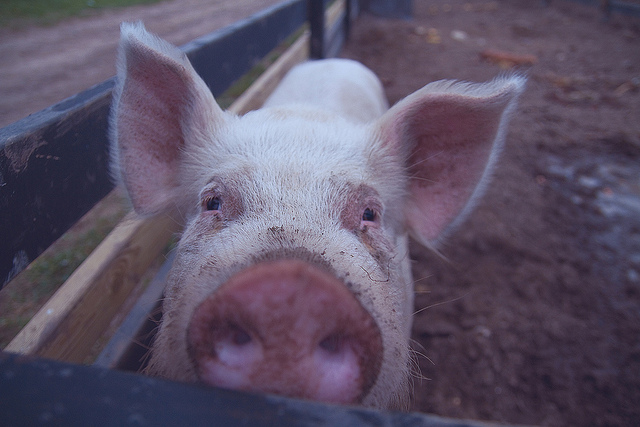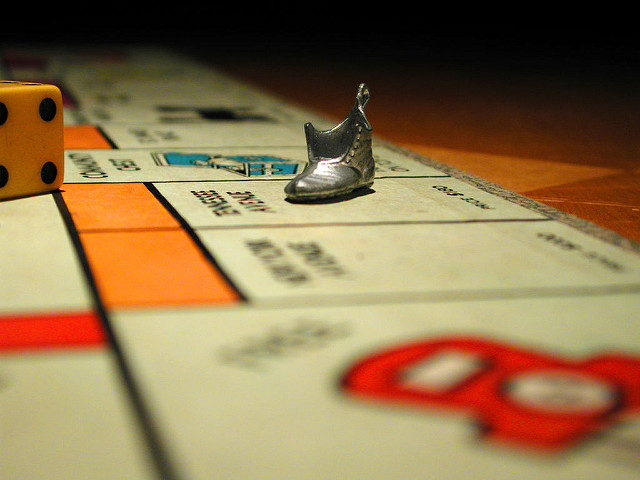Posts Tagged ‘Lessons Learned’
How to wallow in the mud of uncertainty.
 Creativity and innovation are dominated by uncertainty. And in the domain of uncertainty, not only are the solutions unknown, the problems are unknown. And yet, we still try to use the tried-and-true toolbox of certainty even after it’s abundantly clear those wrenches don’t fit.
Creativity and innovation are dominated by uncertainty. And in the domain of uncertainty, not only are the solutions unknown, the problems are unknown. And yet, we still try to use the tried-and-true toolbox of certainty even after it’s abundantly clear those wrenches don’t fit.
When wallowing in the mud of uncertainty and company leaders ask, “When will you be done?”, the only real answer is a description of the next thing you’ll try to learn. “We will learn if Step 1 is possible.” And then the predicted response, “Well, when will you be done with that?” The only valid response is, “It depends.” Though truthful, this goes over like a lead balloon. And the dialog continues – “Okay, then, what is Step 2?” The unpalatable answer, “It depends. If Step 1 is successful, we’ll move onto Step 2, but if Step 1 is unsuccessful, we’ll step back and regroup.” This, too, though truthful, is unsatisfactory.
When doing creative work, there’s immense pressure to be done on time. But, that pressure is inappropriate. Yes, there can be pressure to learn quickly and effectively, but the expectation to be done within an arbitrary timeline is ludicrous. Managers don’t know this, but when they demand a completion date for a task that has never been done before, the people doing the creative work know the manager doesn’t know what they’re doing. They won’t tell the manager what they think, but they definitely think it. And when pushed to give a completion date, they’ll give one, knowing full well the predicted date is just as arbitrary as the manager’s desired timeline.
But learning objectives can create common ground. Starting with “We want to learn if…”, learning objectives define what the project team must learn. Though there’s no agreement on when things will be completed, everyone can agree on the learning objectives. And with clearly defined learning objectives and measurable definitions of success, the project can move forward with consensus. There is still consternation over the lack of hard deadlines for the learning objectives, but there is agreement on the sequence of events, tests protocols or analyses that will be carried out to learn what must be learned.
Two rules to live by: If you know when you’ll be done, you’re not doing innovation. And if no one is surprised by the solution, you’re not doing creative work.
Image credit – Michael Carian
Wisdom Within Dichotomy
 To create future success, you’ve got to outlaw the very thing responsible for your past success.
To create future success, you’ve got to outlaw the very thing responsible for your past success.
Sometimes slower is faster and sometimes slower is slower. But it’s always a judgement call.
We bite the bullet and run expensive experiments because they’re valuable, but we neglect to run the least expensive thought experiments because they’re too disruptive.
There’s an infinite difference between the impossible and the almost impossible. And the people that can tell the difference are infinitely important.
If you know how to do it, so does your competition. Do something else.
We want differentiation, but we can’t let go of the sameness of success.
People that make serious progress take themselves lightly.
If you can predict when the project will finish, you can also predict customers won’t be excited when you do.
If you don’t have time to work on something, you can still work on it a little a time.
Perfection is good, but starting is better.
Sometimes it’s time to think and sometimes it’s time to do. And it’s easy to decide because doing starts with thinking.
When your plate is full and someone slops on a new project, there may be a new project on your plate but there’s also another project newly flopped on the floor.
New leaders demand activity and seasoned professionals make progress.
Sometimes it’s not ready, but most of the time it’s ready enough.
There’s no partial credit for almost done. That’s why pros don’t start a project until they finish one.
In this age of efficiency, effectiveness is far more important.
Image credit — Silentmind8
To improve innovation, use fewer words.
 Everyone knows innovation is difficult, but there’s no best way to make it easier. And everyone knows there’s plenty of opportunities to make innovation more effective, but, again, there’s no best way. Clearly, there are ways to improve the process, and new tools can help, but the right process improvements depend on the existing process and the specific project. And it’s the same for tools – the next tool depends on the existing toolbox and the new work required by the project. With regard to tools and processes, the right next steps are not universal.
Everyone knows innovation is difficult, but there’s no best way to make it easier. And everyone knows there’s plenty of opportunities to make innovation more effective, but, again, there’s no best way. Clearly, there are ways to improve the process, and new tools can help, but the right process improvements depend on the existing process and the specific project. And it’s the same for tools – the next tool depends on the existing toolbox and the new work required by the project. With regard to tools and processes, the right next steps are not universal.
But with all companies’ innovation processes, there is a common factor – the innovation process is run by people. Regardless of process maturity or completeness, people run the process. And this fundamental cuts across language, geography and company culture. And it cuts across products, services, and business models. Like it or not, innovation is done by people.
At the highest level, innovation converts ideas into something customers value and delivers the value to them for a profit. At the front end, innovation is about ideas, in the middle, it’s about problems and at the back end, it’s about execution. At the front, people have ideas, define them, evaluate them and decide which ones to advance. In the middle, people define the problems and solve them. And at the back end, people define changes to existing business process and run the processes in a new way.
Tools are a specialized infrastructure that helps people run lower-level processes within the innovation framework. At the front, people have ideas about new tools, or how to use them in a new way, define the ideas, evaluate them, and decide which tools to advance. In the middle, people define problems with the tools and solve them. And at the back end, they run the new tools in new ways.
With innovation processes and tools, people choose the best ideas, people solve problems and people implement solutions.
In order to choose the best ideas, people must communicate the ideas to the decision makers in a clear, rich, nuanced way. The better the idea is communicated, the better the decision. But it’s difficult to communicate an idea, even when the idea is not new. For example, try to describe your business model using just words. And it’s more difficult when the idea is new. Try to describe a new (untested) business model using just your words. For me, words are not a good way to communicate new ideas.
Improved communication improves innovation. To improve communication of ideas, use fewer words. Draw a picture, create a cartoon, make a storyboard, or make a video. Let the decision maker ask questions of your visuals and respond with another cartoon, a modified storyboard or a new sketch. Repeat the process until the decision maker stops asking questions. Because communication is improved, the quality of the decision is improved.
Improved problem solving improves innovation. To improve problem-solving, improve problem definition (the understanding of problem definition.) Create a block diagram of the problem – with elements of the system represented by blocks and labeled with nouns, and with actions and information flow represented by arrows labeled with verbs. Or create a sketch of the customer caught in the act of experiencing the problem. Define the problem in time (when it happens) so it can be solved before, during or after. And in all cases, limit yourself to one page. Continue to modify the visuals until there’s a common definition of the problem (the words stop.) When the problem is defined and communicated in this way, the problem solves itself. Problem-solving is seven-eighths problem definition.
Improved execution improves innovation. To improve execution, improve clarity of the definition of success. And again, minimize the words. Draw a picture that defines success using charts or graphs and data. Create the axes and label them (don’t forget the units of measure). Include data from the baseline product (or process) and define the minimum performance criterion in red. And add the sample size (number of tests.) Use one page for each definition of success and sequence them in order of importance. Start with the work that has never been done before. And to go deeper, define the test protocol used to create the data.
For a new business model, the one-page picture could be a process diagram with new blocks for new customers or partners or new arrows for new information flows. There could be time requirements (response time) or throughput requirements (units per month). Or it could be a series of sketches of new deliverables provided by the business model, each with clearly defined criteria to judge success. When communicated clearly to the teams, definitions of success are beacons of light that guide the boats as the tide pulls them through the project or when uncharted rocks suddenly appear to starboard.
Innovation demands communication and communication demands mechanisms. In the domain of uncertainty, words are not the best communicators. Create visual communication mechanisms that distill and converge on a common understanding.
A picture isn’t worth a thousand words, it gets rid of a thousand.
Image credit – Michael Coghlan
The zero-sum game is a choice.
 With a zero-sum game, if you eat a slice of pie, that’s one less for me; and if I eat one, that’s one less for you. A simple economic theory, but life isn’t simple like that. Here’s how life can go.
With a zero-sum game, if you eat a slice of pie, that’s one less for me; and if I eat one, that’s one less for you. A simple economic theory, but life isn’t simple like that. Here’s how life can go.
Get with expectation – I expect you to give, and you do.
Get without expectation – I don’t expect you to give, but you do. I’m indifferent.
Get with thanks – I don’t expect you to give, and when you do, I thank you graciously.
Get then give – I get from you, then a couple weeks later, I think of you and give back.
Get and give – I get from you, and I give back immediately. I choose what I give.
Give and get – I give to you, and you give back immediately. You chose what you give.
Give as get – I give to you so I can feel the joy of giving.
Give – I give because I give.
The zero-sum game is a choice. Which game will you chose to play?
Image credit – Mark Freeth
Companies don’t innovate, people do.
 Big companies hold tightly to what they have until they feel threatened by upstarts, and not before. They mobilize only when they see their sales figures dip below the threshold of tolerability, and no sooner. And if they’re the market leaders, they delay their mobilization through rationalization. The dip is due to general economic slowdown that is out of our control, the dip is due to temporary unrest from the power structure change in government, or the dip is due to some ethereal force we don’t yet fully understand. The strength of big companies is what they have, and they do what it takes only when what they have is threatened. But once they’re threatened, watch out. But, the truth is, big companies don’t make change, people within big companies make change.
Big companies hold tightly to what they have until they feel threatened by upstarts, and not before. They mobilize only when they see their sales figures dip below the threshold of tolerability, and no sooner. And if they’re the market leaders, they delay their mobilization through rationalization. The dip is due to general economic slowdown that is out of our control, the dip is due to temporary unrest from the power structure change in government, or the dip is due to some ethereal force we don’t yet fully understand. The strength of big companies is what they have, and they do what it takes only when what they have is threatened. But once they’re threatened, watch out. But, the truth is, big companies don’t make change, people within big companies make change.
Start-ups want to change everything. They reject what they don’t have and threaten the status-quo at every turn. And they’re always mobilized to grow sales. Every new opportunity brings an opportunity to change the game. In a ready-fire-aim way, every phone call with a potential customer is an opportunity to dilute and defocus. Each new opportunity is an opportunity to create a mega business and each new customer segment is an opportunity to pivot. The strength of start-ups is what they don’t have. No loyalty to an existing business model, no shared history with other companies, and no NIH (not invented here). But, once they focus and decide to converge on an important market segment, watch out. But, truth is, start-ups don’t make change, people within start-ups make change.
When you work in a big company, if your idea is any good the established business units will try to stomp it into oblivion because it threatens their status quo. In that way, if your idea is dismissed out of hand or stomped on aggressively, you are likely onto something worth pursuing. If you’re told by the experts “It will never work.” that’s a sign from the gods that your idea has strong merit and deserves to be worked. And this is where it comes down to people. The person with the idea can either pack it in or push through the intellectual inertia of company success. To be clear – it’s their choice. If they pack it in, the idea never sees the light of day. But if they decide, despite the fact they’re not given the tools, time, or training, to build a prototype and show it to company leadership, your company has a chance to reinvent itself. What causes and conditions have you put in place for your passionate innovators to choose to do the hard work of making a prototype?
When you work at a start-up the objective is to dismantle the status quo, and all ideas are good ideas. In that way, your idea will be praised and you’ll be urged to work on it. If you’re told by the experts “That could work.” it does not mean you should work on it. Since resources are precious, focus is mandatory. The person with the idea can either try to convert their idea into a prototype or respect the direction set by company leadership. To be clear – it’s their choice. If they work on their new idea they dilute the company’s best chance to grow. But if they decide, despite their excitement around their idea, to align with the direction set by the company, your startup has a chance to deliver on its aggressive promises. What causes and conditions have you put in place for your passionate innovators to choose to do the hard work of aligning with the agreed upon approach and direction?
When no one’s looking, do you want your people to try new ideas or focus on the ones you already have? When given a choice, do you want them to focus on existing priorities or blow them out of the water? And if you want to improve their ability to choose, what can you put in place to help them choose wisely?
To be clear, a formal set of decision criteria and a standardized decision-making process won’t cut it here. But that’s not to say decisions should be unregulated and unguided. The only thing that’s flexible and powerful enough to put things right is the good judgment of the middle managers who do the work. “Middle managers” is not the best words to describe who I’m talking about. I’m talking about the people you call when the wheels fall off and you need them put back on in a hurry. You know who I’m talking about. In start-ups or big companies, these people have a deep understanding of what the company is trying to achieve, they know how to do the work and know when to say “give it a try” and when to say “not now.” When people with ideas come to them for advice, it’s their calibrated judgement that makes the difference.
Calibrated judgement of respected leaders is not usually called out as a make-or-break element of innovation, growth and corporate longevity, but is just that. But good judgement around new ideas are the key to all three. And it comes down to a choice – do those ideas die in the trenches or are they kindly nurtured until they can stand on their own?
No getting around it, it’s a judgment call whether an idea is politely put on hold or accelerated aggressively. And no getting around it, those decisions make all the difference.
Image credit Mark Strozier
Working with uncertainty
 Try – when you’re not sure what to do.
Try – when you’re not sure what to do.
Listen – when you want to learn.
Build – when you want to put flesh on the bones of your idea.
Think – when you want to make progress.
Show a customer – when you want to know what your idea is really worth.
Put it down – when you want your subconscious to solve a problem.
Define – when you want to solve.
Satisfy needs – when you want to sell products
Persevere – when the status quo kicks you in the shins.
Exercise – when you want set the conditions for great work.
Wait – when you want to run out of time and money.
Fear failure – when you want to block yourself from new work.
Fear success – when you want to stop innovation in its tracks.
Self-worth – when you want to overcome fear.
Sleep – when you want to be on your game.
Chance collision – when you want something interesting to work on.
Write – when you want to know what you really think.
Make a hand sketch – when you want to communicate your idea.
Ask for help – when you want to succeed.
Image credit – Daniel Dionne
Rule 1: Allocate resources for effectiveness.
 We live in a resource constrained world where there’s always more work than time. Resources are always tighter than tight and tough choices must be made. The first choice is to figure out what change you want to make in the world. How do you want put a dent in the universe? What injustice do you want to put to rest? Which paradigm do you want to turn on its head?
We live in a resource constrained world where there’s always more work than time. Resources are always tighter than tight and tough choices must be made. The first choice is to figure out what change you want to make in the world. How do you want put a dent in the universe? What injustice do you want to put to rest? Which paradigm do you want to turn on its head?
In business and in life, the question is the same – How do you want to spend your time?
Before you can move in the right direction, you need a direction. At this stage, the best way to allocate your resources is to define the system as it is. What’s going on right now? What are the fundamentals? What are the incentives? Who has power? Who benefits when things move left and who loses when things go right? What are the main elements of the system? How do they interact? What information passes between them? You know you’ve arrived when you have a functional model of the system with all the elements, all the interactions and all the information flows.
With an understanding of how things are, how do you want to spend your time? Do you want to validate your functional model? If yes, allocate your resources to test your model. Run small experiments to validate (or invalidate) your worldview. If you have sufficient confidence in your model, allocate your resources to define how things could be. How do you want the fundamentals to change? What are the new incentives? Who do you want to have the power? And what are the new system elements, their new interactions and new information flows?
When working in the domain of ‘what could be’ the only thing to worry about is what’s next. What’s after the next step? Not sure. How many resources will be required to reach the finish line? Don’t know. What do we do after the next step? It depends on how it goes with this step. For those that are used to working within an efficiency framework this phase is a challenge, as there can be no grand plan, no way to predict when more resources will be needed and no way to guarantee resources will work efficiently. For the ‘what could be’ phase, it’s better to use a framework of effectiveness.
In a one-foot-in-front-of-the-other way, the only thing that matters in the ‘what could be’ domain is effectively achieving the next learning objective. It’s not important that the learning is done most efficiently, it matters that the learning is done well and done quickly. Efficiently learning the wrong thing is not effective. Running experiments efficiently without learning what you need to is not effective. And learning slowly but efficiently is not effective.
Allocate resources to learn what needs to be learned. Allocate resources to learn effectively, not efficiently. Allocate your best people and give them the time they need. And don’t expect an efficient path. There will be unplanned lefts and rights. There will be U-turns. There will times when there’s lots of thinking and little activity, but at this stage activity isn’t progress, thinking is. It may look like a drunkard’s walk, but that’s how it goes with this work.
When the objective of the work isn’t to solve the problem but to come up with the right question, allocate resources in a way that prioritizes effectiveness over efficiency. When working in the domain of ‘what could be’ allocate resources on the learning objective at hand. Don’t worry too much about the follow-on learning objectives because you may never earn the right to take them on.
In the domain of uncertainty, the best way to allocate the resources is to learn what you need to learn and then figure out what to learn next.
Image credit – John Flannery
The WHY and HOW of Innovation
 Innovation is difficult because it demands new work. But, at a more basic level, it’s difficult because it requires an admission that the way you’ve done things is no longer viable. And, without public admission the old way won’t carry the day, innovation cannot move forward. After the admission there’s no innovation, but it’s one step closer.
Innovation is difficult because it demands new work. But, at a more basic level, it’s difficult because it requires an admission that the way you’ve done things is no longer viable. And, without public admission the old way won’t carry the day, innovation cannot move forward. After the admission there’s no innovation, but it’s one step closer.
After a public admission things must change, a cultural shift must happen for innovation to take hold. And for that, new governance processes are put in place, new processes are created to set new directions and new mechanisms are established to make sure the new work gets done. Those high-level processes are good, but at a more basic level, the objectives of those process areto choose new projects, manage new projects and allocate resources differently. That’s all that’s needed to start innovation work.
But how to choose projects to move the company toward innovation? What are the decision criteria? What is the system to collect the data needed for the decisions? All these questions must be answered and the answers are unique to each company. But for every company, everything starts with a top line growth objective, which narrows to an approach based on an industry, geography or product line, which then further necks down to a new set of projects. Still no innovation, but there are new projects to work on.
The objective of the new projects is to deliver new usefulness to the customer, which requires new technologies, new products and, possibly, new business models. And with all this newness comes increased uncertainty, and that’s the rub. The new uncertainty requires a different approach to project management, where the main focus moves from execution of standard tasks to fast learning loops. Still no innovation, but there’s recognition the projects must be run differently.
Resources must be allocated to new projects. To free up resources for the innovation work, traditional projects must be stopped so their resources can flow to the innovation work. (Innovation work cannot wait to hire a new set of innovation resources.) Stopping existing projects, especially pet projects, is a major organizational stumbling block, but can be overcome with a good process. And once resources are allocated to new projects, to make sure the resources remain allocated, a separate budget is created for the innovation work. (There’s no other way.) Still no innovation, but there are people to do the innovation work.
The only thing left to do is the hardest part – to start the innovation work itself. And to start, I recommend the IBE (Innovation Burst Event). The IBE starts with a customer need that is translated into a set of design challenges which are solved by a cross-functional team. In a two-day IBE, several novel concepts are created, each with a one page plan that defines next steps. At the report-out at the end of the second day, the leaders responsible for allocating the commercialization resources review the concepts and plans and decide on next steps. After the first IBE, innovation has started.
There’s a lot of work to help the organization understand why innovation must be done. And there’s a lot of work to get the organization ready to do innovation. Old habits must be changed and old recipes must be abandoned. And once the battle for hearts and minds is won, there’s an equal amount of work to teach the organization how to do the new innovation work.
It’s important for the organization to understand why innovation is needed, but no customer value is delivered and no increased sales are booked until the organization delivers a commercialized solution.
Some companies start innovation work without doing the work to help the organization understand why innovation work is needed. And some companies do a great job of communicating the need for innovation and putting in place the governance processes, but fail to train the organization on how to do the innovation work.
Truth is, you’ve got to do both. If you spend time to convince the organization why innovation is important, why not get some return from your investment and teach them how to do the work? And if you train the organization how to do innovation work, why not develop the up-front why so everyone rallies behind the work?
Why isn’t enough and how isn’t enough. Don’t do one without the other.
Image credit — Sam Ryan
See differently to solve differently.
 There are many definitions for creativity and innovation, but none add meaningfully to how the work is done. Though it’s clear why the work is important – creativity and innovation underpin corporate prosperity and longevity – it’s especially helpful to know how to do it.
There are many definitions for creativity and innovation, but none add meaningfully to how the work is done. Though it’s clear why the work is important – creativity and innovation underpin corporate prosperity and longevity – it’s especially helpful to know how to do it.
At the most basic level, creativity and innovation are about problem solving. But it’s a special flavor of problem solving. Creativity and innovation are about problems solving new problems in new ways. The glamorous part is ‘solving in new ways’ and the important part is solving new problems.
With continuous improvement the same problems are solved over and over. Change this to eliminate waste, tweak that to reduce variation, adjust the same old thing to make it work a little better. Sure, the problems change a bit, but they’re close cousins to the problems to the same old problems from last decade. With discontinuous improvement (which requires high levels of creativity and innovation) new problems are solved. But how to tell if the problem is new?
Solving new problems starts with seeing problems differently.
Systems are large and complicated, and problems know how to hide in the nooks and crannies. In a Where’s Waldo way, the nugget of the problem buries itself in complication and misuses all the moving parts as distraction. Problems use complication as a cloaking mechanism so they are not seen as problems, but as symptoms.
Telescope to microscope. To see problems differently, zoom in. Create a hand sketch of the problem at the microscopic level. Start at the system level if you want, but zoom in until all you see is the problem. Three rules: 1. Zoom in until there are only two elements on the page. 2. The two elements must touch. 3. The problem must reside between the two elements.
Noun-verb-noun. Think hammer hits nail and hammer hits thumb. Hitting the nail is the reason people buy hammers and hitting the thumb is the problem.
A problem between two things. The hand sketch of the problem would show the face of the hammer head in contact with the surface of the thumb, and that’s all. The problem is at the interface between the face of the hammer head and the surface of the thumb. It’s now clear where the problem must be solved. Not where the hand holds the shaft of the hammer, not at the claw, but where the face of the hammer smashes the thumb.
Before-during-after. The problem can be solved before the hammer smashes the thumb, while the hammer smashes the thumb, or after the thumb is smashed. Which is the best way to solve it? It depends, that’s why it must be solved at the three times.
Advil and ice. Solving the problem after the fact is like repair or cleanup. The thumb has been smashed and repercussions are handled in the most expedient way.
Put something between. Solving the problem while it happens requires a blocking or protecting action. The hammer still hits the thumb, but the protective element takes the beating so the thumb doesn’t.
Hand in pocket. Solving the problem before it happens requires separation in time and space. Before the hammer can smash the thumb it is moved to a safe place – far away from where the hammer hits the nail.
Nail gun. If there’s no way for the thumb to get near the hammer mechanism, there is no problem.
Cordless drill. If there are no nails, there are no hammers and no problem.
Concrete walls. If there’s no need for wood, there’s no need for nails or a hammer. No hammer, no nails, no problem.
Discerning between symptoms and problems can help solve new problems. Seeing problems at the micro level can result in new solutions. Looking closely at problems to separate them time and space can help see problems differently.
Eliminating the tool responsible for the problem can get rid of the problem of a smashed thumb, but it creates another – how to provide the useful action of the driven nail. But if you’ve been trying to protect thumbs for the last decade, you now have a chance to design a new way to fasten one piece of wood to another, create new walls that don’t use wood, or design structures that self-assemble.
Image credit – Rodger Evans
Put Yourself Out There
 If you put yourself out there and it doesn’t go as you expect, don’t get down. All you are responsible for is your effort and your intentions. You’re not responsible for the outcome. Intentions don’t drive outcomes. In fact, be prepared for your work to bring out the opposite of your intentions.
If you put yourself out there and it doesn’t go as you expect, don’t get down. All you are responsible for is your effort and your intentions. You’re not responsible for the outcome. Intentions don’t drive outcomes. In fact, be prepared for your work to bring out the opposite of your intentions.
If you put yourself out there and it goes poorly, don’t judge yourself negatively. Sometimes, things go that way. It’s not a problem, unless you make it one. So, don’t make it one. Just put yourself out there.
The clothes don’t get clean without an agitator. Hold onto that, and put yourself out there.
How do you know you’ve put yourself out there? The status quo is angry with you. The people in power want you to stop. The organization tries to scuttle your work. And the people that know the truth take you out to lunch.
If you put yourself out there and your message is met with 100% agreement, you didn’t put yourself out there. You may have stepped outside the lines, but you didn’t put your whole self on the line. You didn’t splash everyone with a full belly flop. There wasn’t enough sting and your belly isn’t red enough.
You won’t get it right, but put yourself out there anyway. You can’t predict the outcome, but take a run at the status quo. You don’t know how it will turn out, but that’s not a reason to hold back, it’s objective evidence it’s time to take a run at it.
Don’t put yourself out there because it’s the right thing to do, put yourself out there because you have an emotional connection. Put yourself out there because it’s time to put yourself out there. Put yourself out there because you don’t know what else to do.
Be prepared to be misunderstood, but put yourself out there. Expect to be laughed at and talked about behind your back, but put yourself out there. And expect there will be one or two people who will have your back. You know who they are.
No sense holding back. Get over the fear and put yourself out there.
The only one holding you back is you.
Image credit – Mark Bonica
Learning at the expense of predicting.
 When doing new things there is no predictability. There’s speculation, extrapolation and frustration, but no prediction. And the labels don’t matter. Whether it’s called creativity, innovation, discontinuous improvement or disruption there’s no prediction.
When doing new things there is no predictability. There’s speculation, extrapolation and frustration, but no prediction. And the labels don’t matter. Whether it’s called creativity, innovation, discontinuous improvement or disruption there’s no prediction.
The trick in the domain complexity is to make progress without prediction.
The first step is to try to define the learning objective. The learning objective is what you want to learn. And its format is – We want to learn that [fill in the learning objective here]. It’s fastest to tackle one learning objective at a time because small learning objectives are achieved quickly with small experiments. But, it will be a struggle to figure out what to learn. There will be too many learning objectives and none will be defined narrowly. At this stage the fastest thing to do is stop and take a step back.
There’s nothing worse than learning about the wrong thing. And it’s slow. (The fastest learning experiments are the ones that don’t have to be run.) Before learning for the sake of learning, take the necessary time to figure out what to learn. Ask some questions: If it worked could it reinvent your industry? Could it obsolete your best product? Could it cause competitors to throw in the towel? If the answer is no, stop the project and choose one where the answer is yes. Choose a meaningful project, or don’t bother.
First learning objective – We want to learn that, when customers love the new concept, the company will assign appropriate resources to commercialize it. If there’s no committment up front, stop. If you get committment, keep going. (Without upfront buy-in the project relies on speculation, the wicked couple of prediction and wishful thinking.)
Second learning objective – We want to learn that customers love the new concept. This is not “I think customers will love it.” or “Customers may love it.” In the standard learning objective format – We want to learn that [customers love the new concept]. Next comes the learning plan.
What will you build for customers to help them understand the useful novelty of the revolutionary concept? For speed’s sake, build a non-functional prototype that stands for the concept. It’s a thin skin wrapped around an empty box that conveys the essence of the novelty. No skeleton, just skin. And for speed’s sake, show it to fewer customers than you think reasonable. And define the criteria to decide they love it. There’s no trick here. Ask “Do they love it?” and use your best judgement. At this early stage, the answer will be no. But they’ll tell you why they don’t love it, and that’s just the learning you’re looking for.
Use customer input to reformulate the learning objective and build a new prototype and repeat. The key here is to build fast, test fast, learn fast and repeat fast. The art becomes defining the simplest learning objectives, building the simplest prototypes and making decisions with data from the fewest customers.
With complexity and newness prediction isn’t possible. But learning is.
And learning doesn’t have to take a lot of time.
Image credit — John William Waterhouse
 Mike Shipulski
Mike Shipulski